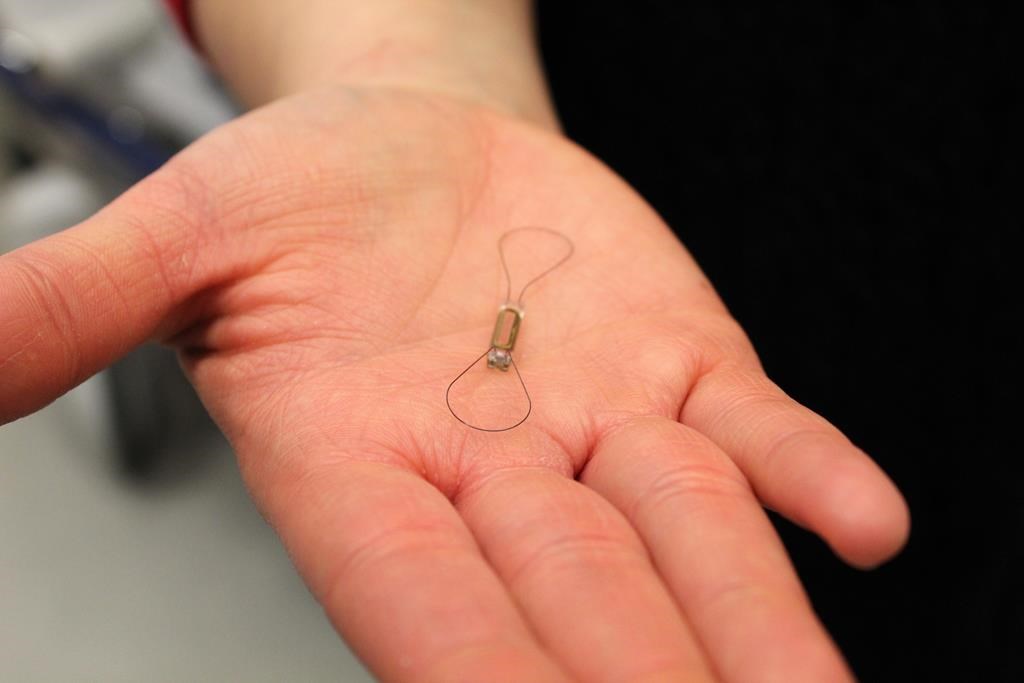A tiny wireless sensor is giving cardiovascular surgeons in Calgary a heads up in the ongoing care of patients who have suffered heart failure.

The CardioMEMS device is just 15 millimetres long and is implanted in the pulmonary artery.
It measures lung pressure, a key marker of a patient’s heart health, and physicians receive daily reports which allow them to detect problems early.
READ MORE: More young women are having heart attacks, unaware of the threat they face
Schoolteacher Michelle Kotelko, 35, was born with a rare heart defect and last September was the first patient to have the sensor implanted.
“I couldn’t even walk from my classroom to the car after a day’s work or around the block with my family without being short of breath and in physical agony,” she said Monday.
Kotelko said she was diagnosed with heart failure and was potentially looking at a heart and lung transplant when her doctor asked her if she’d like to be the first patient in Western Canada to receive the sensor.
“I was sold. I thought anything is better than what I’m living with right now. It has really taken the guesswork out of that cat-and-mouse game of trying to catch up to my symptoms.”
READ MORE: Want to know if you have an irregular heartbeat? Apple has an app for that
Kotelko has to lie down every day for 10 to 15 seconds on a special pillow that allows the device in her heart to send data to her physician.
A transplant is still a possibility, she said, but her condition has improved. She’s at the point where she has been able to resume a normal life which includes bike-riding and kayaking.
“Basically we have been able to use medication therapy … to get my pressure so low that when the time comes, if I do need any type of transplant operation, it will be heart only (not lungs),” said Kotelko.
She said her pain went away within a week of having the sensor inserted due to changes her doctor made in her treatment based on readings from the sensor.
Her physician, Dr. Brian Clarke from Foothills Medical Centre and the Libin Cardiovascular Institute of Alberta are conducting the clinical pilot program that runs until early next year.
“(The sensor) sits there forever and the patient then takes home (the pillow) and sends us information every day,” Clarke said.
“That plots trends of the heart and lung pressures that we make actionable. We use that information to … find the best treatments.”
READ MORE: Family of 10-month-old celebrates his new heart, sends message to others on Valentine’s Day
Clarke said the sensor reduces the amount of time a heart patient has to spend in hospital and is likely to save lives.
“We’re actually able to identify — before the patient even feels anything — when they are starting to retain fluid, when they are starting to deteriorate, before they develop symptoms. That early intervention is where the clinical benefit comes from.”
Clarke said the procedure was developed in the United States and has been in use there for the last six or seven years.



Comments